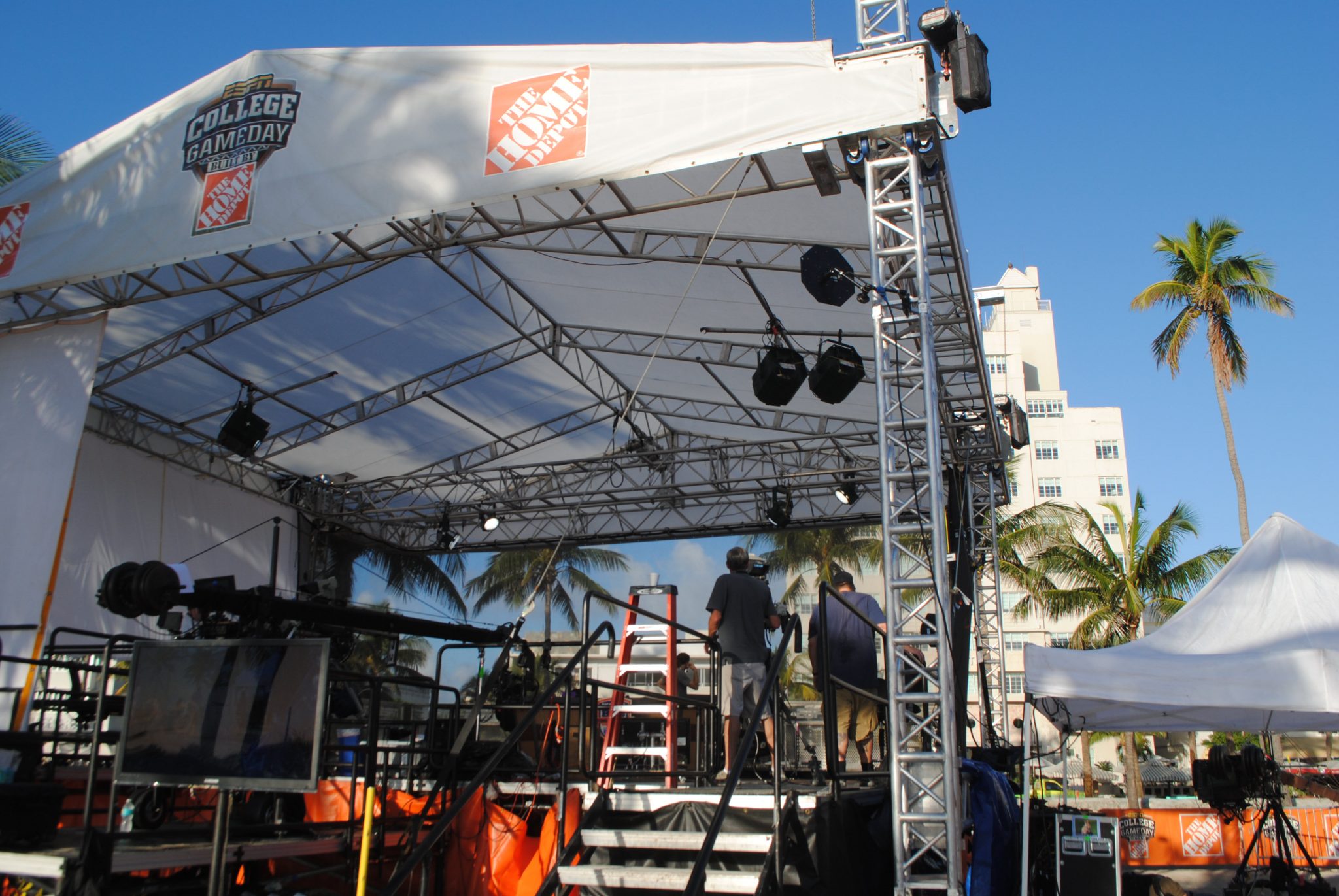Everyone knows just how important it is to have good stage lighting at any entertainment event or on a tv or film set. But, behind the glamour of the spotlight, there are miles upon miles of infrastructure that makes the magic happen. A complex system of aluminum supports and poles are carefully built to form a solid structure from which to hang all the lighting effects any live show or production could ever need.
This system of rigging and trusses is the unsung hero of the lighting world because without them production teams would be limited to simple floor and ceiling lights that wouldn’t look even half as effective.
What Is A Rig and Truss System?
First off, let’s look at the basics:
Rigging is created using a series of rope lines, pulleys, counterweights and other devices, that enables the stage crew to quickly and safely move lighting and other components around to the back and side of the stage.
Trusses are a series of sticks and poles that can be connected to create a structure that allows lighting fixtures and other staging equipment to be hung with ease.
Rigging and trusses are the behind to scenes saviors of the lighting world, and without them, the audience would have a very boring time watching live events. Rigging and trusses can be found in theaters, concert venues, arenas and stadiums anywhere in the world.
Who Works on Rigs and Trusses?
Working with rigging involves climbing up high above the stage area, and members of the rigging teams definitely need to have no fear of heights! Different members of the crew, have different jobs to do to ensure that every part of the rig is safe and that provides effective support for the lighting.
The Ground Rigger looks after the perimeter around the aerial work platform, while the Bucket Rigger needs to be able to operate the aerial work platform as well as undertake groundwork. High Up Riggers and Rope Riggers will be responsible for the installation of equipment way up high and they are often suspended from the rigging itself by a harness, and they may also need to demonstrate exceptional rope skills.
Why Are Rigs and Trusses So Important for Great Lighting?
The very best way to illuminate a stage is to employ a three-point lighting technique. In simple terms, that is the first point 45 degrees to the left and 45 degrees up, a second point 45 degrees to the right and 45 degrees up, and a third light 45 degrees up and straight behind the subject.
To facilitate that kind of angles, you need to be able to lift any lighting equipment up off the floor but still be able to suspend it lower down than usual ceiling lighting would allow. Large venues and professional studio sets require carefully constructed rigs that can contain many individual lights and effects to enhance the performance in front of them, but the ideology is the same – better lighting comes from the ability to elevate your light source.
Here at Frank Gatto Lighting, we have many years’ experience of providing the very best rigging and truss systems for some of the biggest shows on earth, so we are pretty good when it comes to finding the perfect rigging solutions for every event. If you would like to find out more, call us today at (561) 368-0101.
Frank Gatto & Associates, Inc. are specialists in lighting for television events of all kinds. If you have an event that needs expert lighting, please call us today to see how we can help.
Phone: 561-368-0101
Email: frank@frankgattolighting.com
We can be found on Social Media at the following links.

